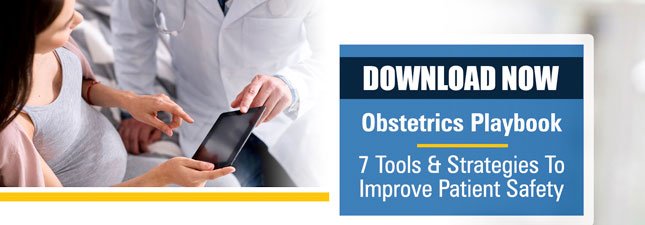 Updated: April 30, 2021
Updated: April 30, 2021
Pregnant women who have known or suspected COVID-19 infection need to be evaluated quickly to determine the severity of their symptoms and if they have risk factors that put them at risk for severe disease. New data on the outcomes for pregnant women have shown that pregnancy is a risk factor for increased severe mortality and morbidity; for example, respiratory distress requiring intubation and admission to ICU, maternal death, and obstetric complications such as preterm birth and stillbirth (Jama Intern Med 2021).
Seven percent of pregnant women who underwent testing for COVID-19 were found to be positive, with 75%-85% asymptomatic and 90% stable enough to be treated outpatient. Thus, most women diagnosed with this infection can be treated without hospitalization, but all known or suspected infected patients must be closely monitored.
Pregnant women who present with exposure to an infected person and/or symptoms or signs of a COVID-19 infection – such as fever, cough, HA, sore throat, new loss of taste or smell, fatigue, myalgias, GI symptoms (diarrhea, nausea, vomiting), rhinorrhea, chills, difficulty breathing and/or SOB – should be tested for infection with the SARS-CoV-2. Test results for infection are not affected by a patient’s recent vaccination against this virus.
SARS-CoV-2 Testing
Antigen testing can be performed quickly, usually in 15 minutes; but it is not as sensitive as reverse transcription-PCR nucleic acid antigen (NAAT) testing, so the CDC recommends confirmatory testing with NAAT technology if symptoms or exposure warrant. Antigen tests can initially be negative, so re-testing can be helpful if symptoms persist or worsen. Antibody tests that are positive for SARS-CoV-2 indicate only that the patient has been exposed to the virus; they are not necessarily accurate to diagnose a current infection.
Classifying Risk
Pregnant women who are complaining of more concerning symptoms of COVID-19 such as SOB with difficulty completing a sentence or walking across the room, new pain or pressure in the chest with coughing, dehydration from vomiting or unable to keep liquids down, and confusion are considered by ACOG’s COVID guidance algorithm to be at an elevated risk for severe infection. They should be evaluated as soon as possible at the hospital (ED or L&D as warranted by gestational age).
If the patient has comorbidities known to increase the risk of severe COVID-19 infection, she is considered to be a moderate risk and should be evaluated as soon as possible in an ambulatory setting where testing such as pulse oximetry, CXR, or ABG can be obtained. Concerning comorbidities include: HTN; DM; lung conditions such as asthma; heart, liver, lung or kidney disease; and an immunosuppressed state due to HIV, medications, or medical condition. Race can be a factor, which increases risk status with Black, Hispanic or American-Indian groups experiencing higher rates of hospitalization and death from an infection.
Additional situations that can increase a pregnant woman’s risk for severe COVID-19 symptoms include a social environment where she has limited resources for remote at-home care and monitoring. Other patients with concerning situations are those with no internet access, who live alone or are undomiciled, and who have limited or no transportation for an in-person evaluation if symptoms worsen.
Patients at risk for obstetrical complications, poor outcomes, stillbirth and premature labor may need to be evaluated in person. Offices and ambulatory testing units must ensure that all precautions are followed to protect providers, office staff and other patients from infection; isolated exam and testing rooms or ambulatory sites should be set up to accommodate patients with known or suspected COVID-19 infections. If providers’ offices cannot safely treat these patients in person, an established site can be identified and made available for them.
Patients who are stable and not in an increased risk situation can continue to be monitored at home. If telemedicine video conferencing communication is preferred to phone calls, secure platforms such as Doxyme can be used.
 At-home monitoring should include, at a minimum, daily temperature with values over 38.3°C warranting further evaluation. The patient can be instructed to monitor fetal activity to reassure herself about fetal well-being. If the patient can acquire medical devices such as a thermometer, an automated BP cuff, pulse oximetry device (> 95% is normal), and a doppler monitor for fetal heart rate recording, she can self-test at home and report the findings to the OB provider during telemedicine visits. Monitoring can be completed every 2-3 days when COVID-19 infection is found or suspected; telemedicine visits can be done more frequently for at-risk patients. Many rural and urban health institutions have already established at-home self-testing programs, which allow patients to incorporate their data into the EMR prenatal chart.
At-home monitoring should include, at a minimum, daily temperature with values over 38.3°C warranting further evaluation. The patient can be instructed to monitor fetal activity to reassure herself about fetal well-being. If the patient can acquire medical devices such as a thermometer, an automated BP cuff, pulse oximetry device (> 95% is normal), and a doppler monitor for fetal heart rate recording, she can self-test at home and report the findings to the OB provider during telemedicine visits. Monitoring can be completed every 2-3 days when COVID-19 infection is found or suspected; telemedicine visits can be done more frequently for at-risk patients. Many rural and urban health institutions have already established at-home self-testing programs, which allow patients to incorporate their data into the EMR prenatal chart.
Outpatient Treatment of Pregnant COVID-19 Patients
What is currently recommended for outpatient treatment of pregnant patients with documented or suspected COVID-19 infection? There are currently no known preventive treatments for post-SARS-CoV-2 exposure or for known infection. Trials are underway now, but no pregnant women are enrolled, so data on safety in pregnancy may never be known. For now, we have safe symptomatic relief and preventive care treatments.
- Acetaminophen is the preferred analgesic for myalgias and other pain such as headache in pregnant women with mild COVID-19 infections.
- Community-acquired bacterial pneumonia co-infection should be treated with antibiotics such as Ceftriaxone plus azithromycin, or ceftriaxone alone. Cultures and procalcitonin levels (>0.1ng/ml) can be used to assist in the diagnosis of a bacterial pneumonia co-infection.
- Monoclonal antibodies have emergency authorization for the treatment of mild to moderate COVID-19 in patients who are at high risk for progressing to severe COVID-19. NIH COVID guidelines state that there are no absolute contraindications to the use of monoclonal antibodies in pregnancy, but there is inadequate evidence currently for their use. Patients with a concerning risk profile may benefit from this treatment modality; coordination with MFM and ID consultation may be warranted prior to administration.
- Glucocorticoids have been used for patients with severe COVID-19 infections and can be used in pregnant patients for this purpose or for fetal lung maturity; however, in most cases, it will not be necessary for patients stable enough for at-home monitoring.
- VTE prophylaxis is not recommended for patients receiving care at home unless the patient has risk factors for a thrombotic event. Clinicians can use their judgment for pregnant women with obesity, HTN, heart disease, DM, or who are experiencing prolonged periods of inactivity.
- Placing patients in a prone position when in bed has been shown to improve respiratory symptoms of COVID-19. While there is no contraindication for pregnant patients to lie on their stomachs, this can be difficult with a gravid abdomen; left lateral positioning is another alternative in this situation.
The provision of safe, comprehensive prenatal care for women with known or suspected COVID-19 infections requires protocols for remote patient communication and a system that can provide timely responses to patient concerns about exposure or suspicious symptoms, for example. Providers must have resources for rapid testing and reporting for their patients. OB practices must identify a site for patient evaluation that is safe for office staff and patients. Hopefully, more information will be forthcoming about the optimal treatments for pregnant women with a SARS-CoV-2 infection.
References:
- Outpatient assessment and management for pregnant women with suspected or confirmed novel coronavirus (COVID-19). Accessed on resource page: https://www.acog.org/topics/ covid-19.
- Allotey J, Stallings E, Bonet M, et al. Clinical manifestations, risk factors, and maternal and perinatal outcomes of coronavirus disease 2019 in pregnancy: living systematic review and meta-analysis. 2020; 370:m3320.
- Centers for Disease Control. https://www.cdc.gov/coronavirus/2019-ncov/lab/resources/Antigen_Testing_Algorithm_2020-12-14_v03_NO_DRAFT_SPW_508.pdf.
- Jering K, Claggett B, Cunningham J. Clinical characteristics and outcomes of hospitalized women giving birth with and without COVID-19. JAMA Intern Med. Published Jan15, 2021. doi:10.1001/jamainternmed.2020.924
- Society for Maternal-Fetal Medicine. Management Considerations for Pregnant Patients With COVID-19. Accessed at: https://s3.amazonaws.com/cdn.smfm.org/media/2401/SMFM_COVID_Management_of_COVID_pos_preg_patients_6-16-20._PDF.pdf.


